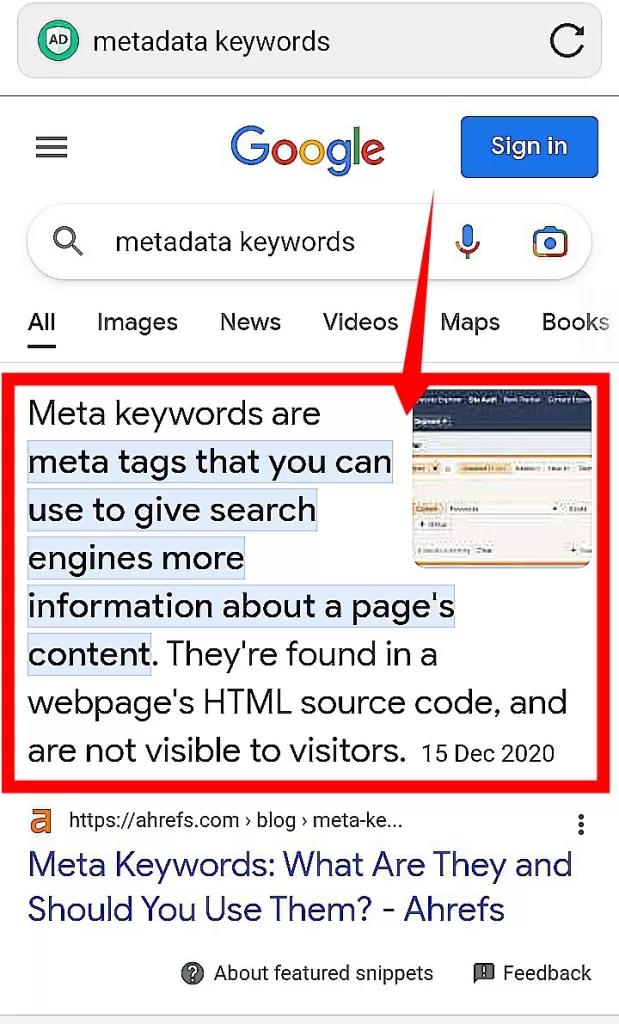

By
Humphrey Udoh
Search engine optimization (SEO) is one of the most important elements of digital marketing. It is essential for bloggers and other content creators to use SEO tactics to increase the visibility and traffic of their websites. One of the most critical aspects of SEO is metadata.
When a blog post’s metadata is optimized correctly, it can significantly increase search engine ranking, and consequently, attract more organic traffic to your website. In this blog post, we will explore the top ten benefits of writing blog post meta data, and how you can use it to unlock the power of SEO.


What is a blog post Meta Data?
Blog post meta data is the information that is associated with a blog post, but is not part of the actual content. It includes various elements such as title tags, descriptions, keywords, author information, date/time stamps, and other details that help search engines and readers understand what the post is about.
Here are the different types of blog post meta data:


The arrow here shows the title tag of the Elivechat post when viewed on the blog homepage
While the box is an excerpt of the post
- Title Tag: This is the title of the blog post that appears in search engine results. It should include relevant keywords and give a clear idea about the content.


- Description: This is a short summary of the blog post that appears under the title tag in search engine results. It should be a concise and accurate description that encourages readers to click on the link.
- Keywords: These are words or phrases that are relevant to the content of the blog post. They help search engines understand what the blog post is about and improve its ranking in search results.
- Author Information: This includes the author’s name, bio, and other contact information such as social media links. It helps establish credibility and builds trust with the audience.
- Date/Time Stamp: This is the date and time the post was published. It helps readers see whether the information in the post is current or outdated.
- Categories: These are the topics that the blog post belongs to. It helps readers find related content on the website.
- Tags: These are additional keywords or phrases that are relevant to the content of the post. It helps readers find related content on the website.
Read: 4 Helpful SEO Strategies To Outrank Competitors


Tips To Writing A Better Meta Description
A Meta description is a short summary of your blog post that appears beneath the title and URL in search engine results pages (SERPs). It is usually between 120-160 characters long and provides a brief overview of what your blog post is about.
The meta description should be compelling and informative to entice readers to click through to your post. It should include the main keywords that accurately reflect the content of your blog post.
Here are some tips on how to write a great meta description for your blog post:
- Keep it concise: Make sure your meta description is short and to the point, so readers can quickly understand what your post is about.
- Use action-oriented language: Use action verbs and phrases that convey a sense of urgency, such as “discover,” “learn,” or “get.”
- Include your target keywords: Use the main keywords that accurately represent the main idea of your blog post, so search engines can identify it.
- Make it unique: Avoid using the same meta description for all your blog posts. Optimize each one to reflect the unique content of the post.
- Include a call to action: Use language that encourages readers to click through to your post. For example, “read now,” “learn more,” or “explore.”
By optimizing your blog post’s meta description, you can improve its visibility in search engines and boost the chances of attracting more readers to your blog.
Read: SEO Meaning And Application


10 potential benefits of writing blog post meta data:
- Increased visibility: With well-optimized metadata, your blog post can appear more prominently in search results, increasing its chances of being seen and clicked on by potential readers.
- Accurate representation: By carefully crafting your title and description tags, you can provide an accurate representation of what your blog post is about, helping searchers determine if it’s worth their time to click and read.
- Improved click-through rates: A well-written title and description can entice searchers to click through to your blog post, boosting your click-through rates and potentially driving more traffic to your site.
- Increased engagement: By using relevant keywords and including concise, informative descriptions, you can encourage visitors to engage with your content, potentially leading to increased time spent on your site and lower bounce rates.
- Better indexing: By providing accurate metadata, search engines may be able to more efficiently crawl and index your site, potentially leading to improved search rankings over time.
- Consistency: By following best practices for meta data across all of your blog posts, you can create a cohesive identity for your brand and help visitors understand what they can expect from your content.
- Improved user experience: When visitors are able to easily find and access the content they’re looking for through search, they’re more likely to have a positive user experience on your site.
- Better social sharing: When your meta data is well-crafted and accurately represents your content, readers are more likely to share your blog posts on social media, potentially driving additional traffic to your site.
- Insights into user behavior: By monitoring which blog posts are getting the most clicks and engagement through search and social, you can gain valuable insights into user behavior and preferences that can inform future content strategies.
- Increased brand authority: With well-optimized meta data that accurately represents the expertise and authority of your brand, you can establish yourself as a trusted voice in your industry or niche.
Conclusion:
In this article today, you have learnt that the benefits of writing well-crafted blog metadata can make your content optimized.
By including relevant and descriptive information in the metadata of your blog post, you can easily improve your search engine ranking, increase click-through rates, and ultimately drive more traffic to your website.
The untold ideas mentioned in this blog post will help you understand the importance of blog metadata and provide practical tips to optimize it for maximum results.
So, don’t overlook the benefits of writing blog post metadata, and start incorporating these untold ideas into your blogging strategy today to reap the benefits.
Comment, share and subscribe to our newsfeed to get notified when we write new articles.
Elivechat Team